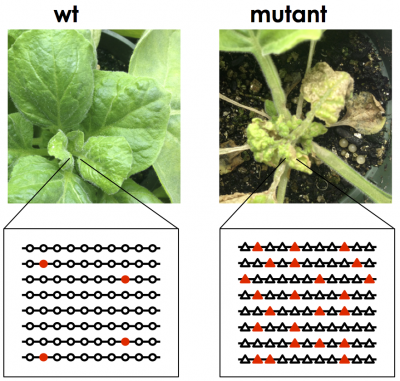Resarch Topics
Apr 1, 2022
Virus Engineering
Artificial design of useful viral genome
Recent advances in artificial DNA synthesis technology have made it possible to inexpensively and easily synthesize genes. Since most RNA virus genomes consist of several thousand bases, artificial DNA synthesis technology can be used to design new viral genomes. This is expected to control the virulence of RNA viruses.
However, replacing the gene sequences of the viral genome with completely different sequences is not possible, and there are many limitations to maintaining the infectivity of RNA viruses during viral genome design. For example, a large-scale substitution of genome sequence that would significantly alter the consensus sequence results in the loss of viral infectivity. Therefore, we are researching to clarify the limiting factors in the design of the viral genome and to overcome them.
We have been able to modify the cucumber mosaic virus (CMV), one of the representative plant RNA viruses. Introducing large-scale synonymous substitutions in the CMV genome results in less viral accumulation than the wild-type CMV. When these large-scale synonymously substituted mutants were passaged in the host plant, one or two amino acid mutations occurred in the coat protein, and the virus accumulation was restored (Mochizuki et al. 2018). By using these amino acid mutations in the coat protein, the infectivity of the CMV can be maintained even if the CMV genome is modified, making it possible to design a completely new CMV genome. Currently, we are artificially manipulating the GC content of the CMV genome to analyze its impact on the virulence of CMV.
